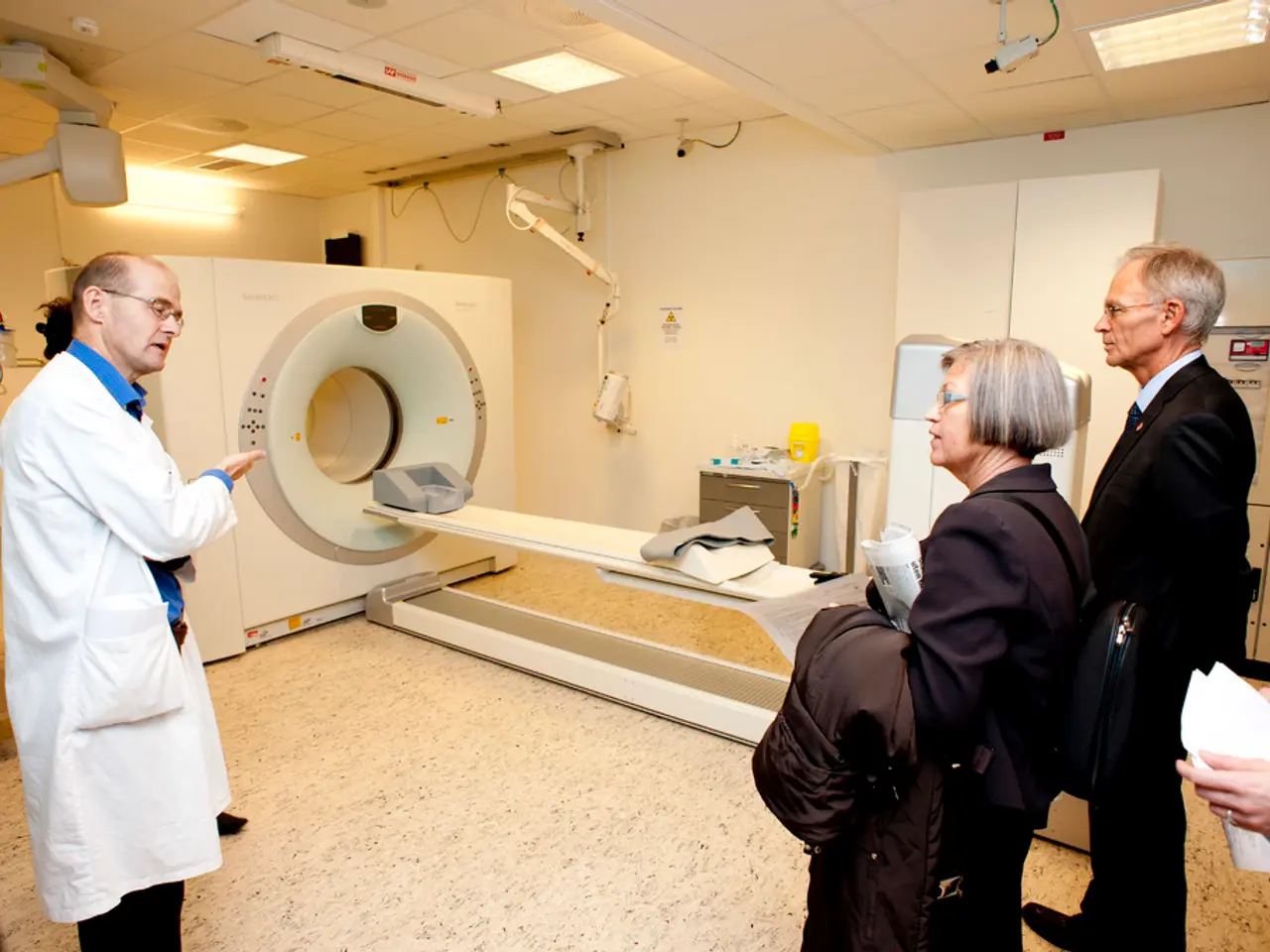Prostate Cancer Examination Guidelines, Outcomes, and Financial Aspects
In the United States, prostate cancer is the second most common cancer among men, a concerning statistic that highlights the importance of understanding prostate cancer screening and its implications. The risks and benefits of screening vary by age and risk level, and it's crucial for men to be informed about these factors to make informed decisions.
For the average-risk man, screening typically begins at age 50. The benefits include early detection of potentially aggressive prostate cancers, which can significantly improve treatment success and outcomes. However, there are risks associated with overdiagnosis and overtreatment of slow-growing cancers that may never cause symptoms. These treatments can lead to side effects such as urinary incontinence, bowel problems, or sexual dysfunction.
Men with a higher risk, such as African Americans or those with a family history of prostate cancer, may benefit from starting screening earlier, at age 45. Earlier detection in these higher-risk groups can potentially improve survival. However, the drawbacks remain similar, and the higher baseline risk of cancer at this age in these groups should be considered.
Men with a very high risk, such as those with BRCA1/2 mutations, a strong family history, or African Americans, may need to begin screening as early as age 40. This early detection allows for the potential catch of aggressive cancers very early, but it also increases the chance of overdiagnosis and the subsequent side effects from treatments.
Overall, the main benefit of screening at any age is early cancer detection, when it may be more treatable. The main risks across all age groups include overdiagnosis (detecting cancers that would not become life-threatening) and overtreatment causing potential urinary, bowel, and sexual side effects. Guidelines emphasize shared decision-making between patient and doctor, weighing personal risk factors and values before deciding on screening timing.
In summary:
| Age Group | Recommended For | Benefits | Risks | |------------------------|--------------------------------------------|--------------------------------------|-----------------------------------| | 50 (Average risk) | Most men without increased risk | Early detection and treatment of cancer | Overdiagnosis/overtreatment with side effects| | 45 (High risk) | African Americans, family history | Earlier detection in higher-risk groups | Same as above, but balanced against greater cancer risk| | 40 (Very high risk) | BRCA1/2 mutation carriers, strong family history, African Americans | Potentially catch aggressive cancers very early | Higher chance of overdiagnosis and side effects|
Screening is typically recommended until about age 70, with consideration of overall health and life expectancy beyond that. Decisions should be personalized based on risk factors and preferences. Those with a higher risk may require screening at an earlier age, such as age 45 or 40.
There are many ways to treat prostate cancer, including active surveillance, surgery, radiation, hormone treatment, chemotherapy, drugs to treat cancers that spread to the bone, and clinical trials. In many states, private health insurers are required to cover tests that detect prostate cancer screening, including the DRE and PSA test.
A digital rectal examination (DRE) can help detect prostate cancer in people with normal PSA blood test results. The procedure involves a doctor placing a gloved, lubricated finger into the rectum to feel for an enlarged prostate. Roughly the size of a walnut, the prostate gland produces some fluid included in semen. PSA is a protein produced by the prostate, with higher levels indicating potential problems. There is no specific normal amount of PSA in the blood. If an individual has high levels of PSA, the doctor may recommend continued testing and monitoring.
Prostate cancer screening can help find prostate cancers that have a high risk of spreading, increasing the chance of a person's outlook. However, the primary risk of prostate cancer screening is that it can cause a false positive test result, leading to further unnecessary tests, including a biopsy of the prostate.
Many healthcare professionals are willing to work proactively to rule out unnecessary tests. Males age 70 and above should not get routine screening for prostate cancer. The U.S. Preventive Services Task Force recommends that males between 55-69 years old make individual decisions about getting a PSA test. Medicare Part B covers DREs and PSA blood tests every 12 months for men over age 50, with a 20% deductible for a DRE but no charge for the PSA blood test.
Read also:
- victory for Central Java communities in landmark lawsuit against textile conglomerate over pollution issues
- Weekly Proceedings in the German Parliament (Bundestag)
- Tale of Suicide of Investigative Reporter Gary Webb, Known for Unveiling CIA Involvement in Drug Trade
- Americans opt for a blend of freedom and death in their decision-making process







